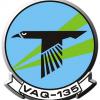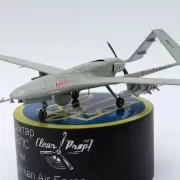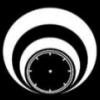Leaderboard
Popular Content
Showing content with the highest reputation on 03/06/21 in all areas
-
My wife brought me this for my birthday, as I was off for the week I decided to set myself a birthday challenge and try to build and finish the kit within that week off. I am pleased to say I managed to do it. I started it last tuesday and put the matt coat on last night. It was nice to build a kit without adding any photoetch or resin etc and just enjoy what is in the kit itself. The only addition was a spare resin seat I had in the spares box (not the correct seat but looks ok under the closed canopy) and the air probe on the wing was broken in my boxing so I used a bit of brass wire. The kit is nice and I liked the touch of having the air intake cover and exhaust cover provided. The only down points I thought was that the detail on the fuselage halves is a bit soft and the detail in the cockpit is not great. It is made up of 3 black and white decals which look a bit rubbish given the detail in the rest of the kits. I hope you like it. I decided to paint the yellow and green squadron markings and was pleased with the result (particularly that my masking for the fuselage markings was correct when it came to add the roundel decal) DSC_0100 by Richard Page, on Flickr DSC_0104 by Richard Page, on Flickr DSC_0105 by Richard Page, on Flickr DSC_0106 by Richard Page, on Flickr DSC_0110 by Richard Page, on Flickr DSC_0111 by Richard Page, on Flickr DSC_0112 by Richard Page, on Flickr DSC_0118 by Richard Page, on Flickr DSC_0107 by Richard Page, on Flickr36 points
-
Hi all, just finished the new GasPatch Me 163 Komet in 1:48. Just an amaizing kit, I built OOB.17 points
-
...in 1/144 scale. Hi y'all! Felt like building a jet. Quickly though, it's only a jet. Something small, and fast. Took me longer than I thought though... But here it is. Hope you'll like it. Ciao Iwik16 points
-
Well, that will be be the last of the serie, but certainly the most interesting indeed. By 1941 Finland was part of the Axis, and ,as such, could not except any spare parts from Britain. As a matter of fact , the Mercury engined Fokker were in need of modernisation. The availability of US engines led to the transformation of the "Sarja" in something hybrid, but the Finnish air Force was in need of anything which could fly and fight! So the wasp engine Fokker was born! A different engine, a longer hood, different tail surfaces and rudder and that was it! Here are pics of the plane of Maj. L. Bremer in Syyskuu, in September 41. Best regards and mny thanks for those who shown an interest is this small but courageous nation aviation. 0398F902-4763-4AD7-B513-9B620C81D954_1_201_a by jean Barby, sur Flickr 7E84A554-81CD-4EB3-BB34-2DB701F1EDC9_1_201_a by jean Barby, sur Flickr 18FDC114-13CF-408F-99B4-6D5E84BB2A11_1_201_a by jean Barby, sur Flickr 6B7CC558-23AA-4A37-A8D9-33AE7D2D88CE_1_201_a by jean Barby, sur Flickr 3D72292D-9CB0-4700-BB52-CD4C238DA495_1_201_a by jean Barby, sur Flickr 9850B426-6088-4CDF-AF7F-FF24A4C2562D_1_201_a by jean Barby, sur Flickr 0F3BD0FC-CE74-499B-A4FC-2CA2C55AFF70 by jean Barby, sur Flickr14 points
-
Hello all, I hope everyone is keeping well. This F-4J is built from the Tamiya kit, so there maybe a few inaccuracies in the final make up from the real thing, so apologies for that. It had been a 'thing' I have always wanted to build but sadly we don't have a good 1/32 F-4 that is suitable for the RAF except these of 74th Squadron that were directly imported from the US. Only add on were the smile lights that came from Eduard, painted with Gunze paints and all stores are fitted with magnets.13 points
-
The Fiat G59 4 A and B single and two seater with low spine and Rolls Royce Merlin engine is my absolute favourite aircraft.It is the Pacific Coast Models 1/32 scale Fiat G55 with the resin conversion set from Maurizio Di Terlizzi.The landing gear was scratch built using brass tubes and sheet. Saluti Giampiero13 points
-
11 points
-
Hello, this is my Wingnut Albatros D.V. Lozenge decals are from Aviattic, while the figure comes from the Copper State range. Wood panels were painted with oils over an acrylic base.11 points
-
This was my first build for a long time and since retiring late last year. Its the Airfix 1/48 Hurricane kit and was built straight out the box, apart from the addition of aftermarket resin exhaust stacks (I messed up the kit originals trying to drill them out. Doh!) Paints are the MiG acrylic Early RAF WWII Early Colo(u)rs and various Tamiya acrylics. Radio wires are mig 0.02mm elastic rigging thread. Decals are the kit ones in the main, with aircraft serial No and Sqn codes supplied by Xtradecal. I used my cheap old Aztek airbrush to spray this one. Hence the rather spluttered finish. I've since splashed out on a H&S Infinity CR+. I'm only just starting to try various weathering techniques and concentrated on dirtying up the underside and wheel wells here. For although the aircraft were being heavily used in war time conditions and were no doubt lacking the normal pampering that groundcrew would have provided in peace time, I didn't want to over do it because it was hot and dry in summer 1940, so dust, boot scuffs and screwdriver scratches would have been the likely main wear and tear on what were relatively new airframes. My chosen aircraft can be seen in this contemporary Pathe Newsreel featuring 56 Sqn aircraft, normally based at North Weald in Essex but filmed operating out of an Ashford in Kent during the Battle of Britain. P3153 US-U has the moniker 'Euthanasia' hand painted on the port fuselage side, just below the windshield. U is for Euthanasia presumably? The dark humour behind this appealed to me. My attempt to replicate this is unfortunately slightly overscale, but it's the smallest script I could write by hand on decal film using a 0.3mm Rotring pen filled with white ink! Hard to see the camo pattern demarcation in this old B&W film, but glimpses of the rear fuselage during taxying lead me to believe its type A, so that's what I went with. I was also able to choose what I believe is the correct serial number font based on the film footage and scratch build an appropriate rear view mirror. I've since also completed an Albion 3-point re-fuelling vehicle based on the 1/48 Airfix kit. I hope to complete a BoB Diorama featuring the Hurri and the re-fueller at some point. Am I the only one who finds researching the subject matter ultimately more rewarding than the final model? Update 18/08/2023 I finally took the following pics with ICM RAF Personnel, including some with the Albion 3-point Fueller.11 points
-
Here is my finished Zvezda Boeing 737-8 Max in 1/144 scale. This is in the ‘protective layer’ fresh from the production line and in British Airways livery, though they don’t actually operate this variant, it is used by Comair in South Africa under the BA livery (ZS-ZCA). It was a standard OOB the build with the detail sheet supplied by Authentic Airliner Decals. The kit is straight forward enough to build and is great for little details at the same time! As this was a build designed to show the aircraft in its post production state the paint used was Halfords Racking Grey all over. I used Revell 361 applied lightly with streaks for the high impact primer layer on the engine nacelles. Various Revell Aqua colours for the metals. The detail sheet from AA was excellent and very true to life. It was like completing a jigsaw puzzle the way the pieces all interlocked and joined! I have always wanted to do a model in this way and when I saw this sheet I knew it had to be done! I can only hope I’ve done this excellent sheet some justice. It’s tempting me to convert a 737-8 Max to a 737-7 Max just to do the other scheme. Thank you for looking and as always feedback and comments are always welcomed. I am on a roll with getting these projects that have been sat around for a long time completed! Regards, Alistair11 points
-
Baby squid launched into space (and we all know what happens when they come back)....11 points
-
I've wanted to build Bf 109 G-2, W.Nr 10639 - Black 6 since I read Russ Snadden's book in 1993. Naturally I'm re-reading it again ! Captured by the Australians in 1942 (yes, I agree it should be in 'the Land Down Under') and generally test flown, displayed and mistreated by the RAF until Russ Snadden and his team took it in hand in 1972 and restored it. If you want to know more about the fascinating back story, read: I'm lucky to be old enough (?) to have seen it flying in 1997 at Duxford, (Flying Legends in July I think, I didn't write the date on the photo packet); (diorama idea?) I also count myself lucky not to have been there on Sunday October 12th 1997 when it last flew! So, to work! Another FineMolds offering, which should make life easy; Sprues, and some add ons; The fuselage will need some tiny alterations as Black 6 was built as a G-2 from an F-3 fuselage. More aftermarket, AND the all important Dave's Decals; (Oops, included the Yahu i/p and Rob Taurus canopy again). Hope to make a start this weekend. Cheers,10 points
-
I've brush painted the decks of HMS Middleton. My Google Pixel 3a phone camera really struggles with the B5 paint for some reason, the previous photograph being very over-saturated and frankly quite lurid compared to reality, which I hope hasn't given a bad impression of the paints themselves. I tried the following photograph on a Samsung phone camera and it's better, and I have another couple on the DSLR but I so rarely use those because it's such a laborious faff getting the .raw files from the camera's SD memory card onto a proper PC and then using some annoying software to convert .raw into something remotely useful for sharing online - so I haven't retrieved them from the expensive camera I seldom use, basically. The wonky platform with the Type 273 lantern was placed on for this and not quality checked for alignment before emailing the photograph to myself from the work phone. Sorry about that, but you get the idea.10 points
-
Build #8 - Tamiya Messerschmitt BF109 G-6. Definitely starting to become a Tamiya fanboy! this one is up there with the P51, P38 and Spit! some serious thought and engineering went into this design and it was a joy to put together (as always with Tamiya) the quality and fit are excellent as you'd expect, again no need for filler or excessive force to complete the build. Granted the engine bay isn't as detailed as using aftermarket detailing kits, but its still better than you'd expect from using stock parts, and the unique way the engine bay is constructed sets this kit apart in my opinion! As with my last build i masked off and painted in as much of the livery as possible which i prefer to using the supplied decals. The German insignias were a little tricky but i was more than happy with the result, the spiral on the nose came out better than expected too. the fuselage was my first attempt at airbrushing freehand, i had a few problems with my airbrush and couldn't seem to keep the pressure consistent which resulted in paint splattering - turns out it just needed a bloody good clean! I used Vallejo Mecha primer on this one which really helped with the yellow pigment which really doesn't like to be applied straight to plastic - I'm pleased with the final result, let me know what you think!9 points
-
9 points
-
Hello everyone. Here's Tamiya's re-tooled Panzer IV/70(V) tank destroyer, built out of the box, which includes two excellent crew figures. Construction is very straightforward, of course, but the factory applied camouflage scheme proved slightly more challenging. I used Tamiya and Vallejo paints, with oils, pigments and weathering pencils for a bit of subtle weathering. I wanted to capture the look of a newly issued vehicle in the autumn of 1944. All the best, Ian8 points
-
Hi all, As the magazine has just about finished selling now, I can show you some scenic photos of the Blenheim that appeared in this month's AMW. Fuelled up and tooled up, ready for ops in the Greek sunshine, 1941: More conventional magazine shots: Period style: Hope you like it, Dean8 points
-
A few photos of one of my models. On this model, I tried masking with adhesive tape. I painted the black line separating the individual colors with a CD marker . The building of the model was relaxing. In 2018, the model participated in several competitions in Russia, unfortunately the damaged one returned to me.8 points
-
Well, it's been a few years since Donald came into being from the JPG resin Gonk kit, and that's far too long to go without any Gonk action, so I've spent the last couple of weeks designing a 3D model in fusion 360. I've also been waiting for some warmer weather so I can get printing again, and since summer seems to have finally arrived, I fired up the Mars at the weekend and started Gonking around. The design I've drawn up is loosely based on the Gonk you see in the Sandcrawler in ANH, which is also similar to the one that's guesting in Bad Batch at the moment. Actually, the main reference I've been using is the old Kenner 3¾ action figure, which can be seen below. I've taken the dimesions for the 3D model from that action figure, but scaled up 1.6 times, which seemed like it would give me something that would roughly equate to 1/12 to fit in with my Bandai droids. Although I'll be printing out the main components, some of the smaller details will be scratch built as I still want to get some traditional modelling into the project. I started off with the feet which are modelled pretty closely on those from the action figure, but I scaled them up sightly less that I did with the rest of the figure, because at 1.6 times they looked too big compared to the body. The print lines on these weren't too bad, but I gave them a good wet sanding to smooth them out. There are still a few tiny traces of texture around the corners of the raised squares on the top, but they should look fine once I've got some primer on. The holes for the legs go right through the foot, and I'll be scratch building the legs using some styrene tube for the main structure with some wire or something similar wrapped around to create the corrugated effect. The ends of the tubes will then slot into the holes in the feet. I may add some more detailing to the feet with styrene or spare photo etch depending on whether I find something suitable. The feet are modelled hollow, which can be seen from the underside. They're done with 1mm think walls, and I added the framework to give them some rigidity. I might back fill the cavities with some lead shot to give them some extra weight and make the model a bit more stable. I was fairly happy with the way the feet turned out, so I moved on to the lower body. This too printed out pretty well, although the inset channels down each side will need some additional sanding to better smooth them out. It's sitting upside down as you're looking at it here, and the square cutout in the middle is where the legs will attach, although I'm still figuring out exactly how I'm going to mount them. The four holes are there simply to reduce suction on the FEP film when the final layers were printing and also to slightly reduce the amount of resin used. They don't make much difference on that score, but every bit counts I suppose. There should be a panel line running around the lower edge of the body, and I did add one to the 3D model, but I saved two STL files, one with and one without the line, then accidentally printed the wrong one. Since the print took 8 hours, I couldn't be bother to do it again, so the panel line will have to wait for the next Gonk I do. Again, like the feet, I designed the body hollow with 1mm walls, and added an internal framework to keep it all square while printing. The top edge and the frames look a little messy here, but that's just where the print supports have been removed. All that will be hidden when the lower body is clipped into the waist band part. The remainder of the main parts have been printed now, but I'll leave those for the next update. And, as usual with my droid builds, I'm open to possible names. Anyone who's followed any of the old builds before will know the form those names tend to take (not that I condone such flagrant ridicule of political figures, of course) GONK7 points
-
Hi guys !! Hope you don’t mine an Armor modeler coming out of the mud, to join you good folks. This kit has languished in the stash for over 10 years, I think. I plan on building it practically straight from the box; more to test out the required skills needed for aircraft, than anything. Here’s the required box shot, and unopened sprue bags. I do have an extra set of decals that will be used. I plan on one of the two lower aircraft. Don’t expect any miracles !! Im used to heavy weathering and mud Lee.7 points
-
I’m away for the weekend so no real time for plastic fantastic but looking this morning at Peter’s absolutely stunning build ( @airscale ) Even though I won’t even consider coming close to this pretty much 1:1 scale beauty I think what I have can be painted and wired into a close resemblance to what I’m after. looking at these builds this morning though has shown me that I should have painted the bottom of my cockpit floor. 😲😩. I have just slashed some paint on before heading off to sort out the van. Hope you’re all having a fun week in the sun. 🌞 Johnny7 points
-
Hello to all of you guys and girls.I have finished the old Italeri F-117A as a quick and pleasure build.The kit itself its quite nice and the fit is really good.I have rescribed the panel lines.I did add some simple cockpit details like some knobs and seatbelts.The decals used are for the only f-117a to be lost in combat and the decals came from balkan models set for the downed ac over yugoslavia.I have made a video build that I have posted on my youtube chanel so if interested feel free to look it up on the following link. Regards,Dragan7 points
-
I'm back, very good modeling session today. WINGS AND UPPER FUSELAGE SURFACE First I used the Mahogany from Gunze For the frist step of the preshading, darkened for the main panels with dark brown and in the areas of greater light a buff lightened with white in the spot areas in the center of the panels: dilution 80% I then used rlm 79 of AK Real color diluted at 70/80% to a fine control of the coverage. Here is the result. LOWER SURFACES AND FUSELAGE For the lower surfaces I used for the preshading a mix that I had made for an f16, similar to the Intermediate blue of the ww2 but more charged with blue, for the main panels a true blue and for the lights of the panels a light gray, the latter very diluted for fine tone management. Once dry I gave several passes of AK Rael Color RLM 78 very diluted until the result satisfied me MIMETIC Finally I used the AK Real Color RLM 80 for the camouflage spots For now it's all good evening everyone7 points
-
What a lovely kit, and the aircraft itself. Swift. However, not agile. Very pleasant to build, quite well fit of parts (except for the fuselage and wings joint at the underside). As for the extras, I only put a resin pilot seat from Pavla into the cockpit. The camouflage painted using paper masks cut from the enlarged manual, MRP paints on top, White Aluminum AK Extreme Metal on the bottom, wells and the inner sides of the covers and flaps are painted with acrylic Silver paint from AK. I hope you like it.6 points
-
Hello all 🥳 Today I would like to show you my project from the Panzer III GB. I built a SIG 33B assault infantry gun, which was used in Stalingrad. The vignette shows a railway line in the industrial quarter near the famous grain silo during the first snowfall. The model by Dragon is old, but with a few refreshments very usable. The water pump comes from Plusmodel, again with minor changes 😉 As a finishing touch I added a figure from Panzerart with a Hornet head and BvB scarf 😎, which should give more life to the scene. I have to admit that the whole construction process tested my patience at times, but all in all it was a lot of fun 😅 Thanks again to hosts Stix and Ozzy for an exciting GB and anyone who has written or visited my build. 👍 🙂 If you are interested you can find the whole build here: www.britmodeller.com/forums/index.php?/topic/235088377-15cm-sturm-infanteriegesch%C3%BCtz-33-auf-pz-iii/ Have fun! MD See you!6 points
-
Tempest Mk.II Hi-Tech (SH48214) The Last RAF Radial Engine Fighter 1:48 Special Hobby The Tempest II was one variant of the Typhoon replacement, both penned by Sir Sidney Camm. The Tempest was split into a number of parallel sub-projects to prevent it stalling in the event that any of the possible engine options ran into difficulties or were cancelled. The Tempest II was designed from the ground-up to be powered by a radial engine, and ended up using the Centaurus that had originally been destined for the failed Tornado project, that initially caused some teething troubles until the engine mounts were replaced and some other tweaks made. The aircraft was very similar to the well-known Mk.V from the firewall back, but with the huge cylindrical cowling it bears more than a passing resemblance to a Sea Fury. Due to the state of the war as it reached service, the initial orders were successively cut back, even though the aircraft's massive power delivery and more streamlined front section resulted in a faster aircraft. Under 500 airframes were eventually built, some as pure fighters, while the rest were converted to fighter-bombers, as the needs of the war shifted once the Allies dominated the skies. In service the Tempest Mk.II was found to be an excellent aircraft, and was the fastest prop-driven fighter of WWII at low altitude, even faster than its sibling, despite the heavier Centaurus engine, which was more than compensated for by the missing weight and drag of the chin-mounted radiator. It was also rugged, could take plenty of punishment, and could be thrown around the sky by a competent pilot despite its thin wing, and some airframes were converted for use as fighter bombers. After the war the surplus airframes were sold to other nations after their retirement, with some lingering on as target tugs into the 50s. The Kit This is a reboxing of the Eduard kit with some additions in the shape of resin parts to turn it into the Hi-Tech edition we have here. It arrives in a dark blue themed box with a painting of a British Tempest II on the lid, plus profiles and details of the included resin on the sides. Inside are six sprues in two shades of blue-grey styrene, two clear sprues, a Ziploc bag of resin, a small fret of Photo-Etch (PE) seatbelts, a sheet of kabuki tape masks, a large decal sheet, and a glossy instruction booklet with spot colour and full colour profiles at the rear. Anyone that has seen the initial Tempest kits from Eduard will know the quality of the mouldings, and some of the sprues in the box are from the original Mk.V, while two in a slightly different shade are from the forthcoming Eduard Tempest II, complete with exceptional detail that includes rivets, cowling fasteners, and fine engraved panel lines. The added resin improves the detail in the engine compartment, which allows the modeller to open up the port side of the engine to expose the Centaurus engine, plus the additional resin wheels with thick chunky tread on the tyres for rough field operations. Construction begins with the pilot’s seat, which is assembled from back with two side parts, plus the adjustment mechanism that is fixed on the right, with the PE lap belts added, leaving the shoulder harness until later. The seat is fitted to the rear bulkhead, which has the floor slotted into it, the rudder pedals and the control column put in place, complete with the three-faceted instrument panel, which has four instrument decals applied once it is painted. This fits to the front of the sidewall frames, which both have additional details glued on, plus the cross-member that supports the compass, which also has its own decal. The frames, cross-member and front bulkhead are added to the sides and front of the cockpit, and the instrument panel installs on two pegs on the cross-member along with the port side console. You can’t close up the fuselage just yet, and the choice of open cowling requires the engine side and resin front to be assembled, plus the spacer and drive axle stub, which can be left loose so you can spin the prop. If you’re leaving the cowling closed, there is a styrene engine front and spacer that takes its place. To pose the cowlings open, the port side of the fuselage is removed carefully following the panel lines, which allows the crisp detail of the resin to show through. The fuselage halves need a little paint in the cockpit sides, plus a few small parts in the port side, and a bit more paint in the tail wheel bay and its two-part bay former, then you can glue them together once your choice of resin engine or styrene front is inserted. The closed cowlings don’t need the panels cutting out of course. Attention shifts to the wings, starting with the wheel bays, the roof of which is moulded into the underside of the upper wing halves. The bay walls are boxed in with individual panels, plus a few ribs and stiffeners, all of which is painted in interior green on both sides, with a splash also applied to the full-width underside of the bays and the radiator intakes, which also have a radiator core inserted into the starboard wing root. The wings and fuselage are brought together and joined by the front cowling lip, which also gets the interior green treatment, and in the top of the nose, just forward of the canopy, a choice of a solid panel, or a louvered intake for the filters fitted to tropical-converted airframes. The tail of the beast has the fin moulded-in, to which you add the rudder and the elevator fins and flying surfaces that are all able to be posed deflected if you choose. The ailerons are also posable, and are made up from two parts each, one in each wing as you’d expect. If you look at the cockpit aperture it is way too large at this stage, until the sill insert is added along with a number of parts on the rear deck and the gunsight under the front edge. It’s insert time now, with a pair of clear nav-lights in the wingtips, a pair of leading-edge inserts for the twin cannons, their tiny barrel stubs, and finally the exhaust stubs peeking out from behind the cowling on each side. They’re not hollow tipped, but at that size no-one will really notice. The tail wheel is first to be added, using either the resin one, or a two-part styrene alternative, slipping it between the yoke, which attaches to the strut, then inserts into the depression in the bay roof. The bay doors are attached to the sides with small tabs, and an actuator fits in the rear of the bay behind the wheel. The main gear has the same choice between smooth styrene wheels and knobbly resin wheels with some serious detail. These slide onto the axles of the struts, and have the captive gear bay door glued to the opposite side, then the completed assembly slots into the bay roof, and would benefit from some brake hoses from your own lead wire supplies. The retraction struts are fitted later, along with two additional bay doors. While you’re fitting the wheels, you fit the identification lights, two tiny clear parts behind the spent cannon brass chutes, another in the mid-fuselage, and two tiny parts under the fuselage level with the wing leading edge. The crew access stirrup and a short aerial are arranged around the trailing edge of the wing, then that big prop is made up. The prop offers a choice of blade types for the various decal options, which are both trapped between the back-plate and spinner cap before they are slipped over the drive-shaft. The open cowling variant gets its two resin replacement covers, plus three tiny resin clasps, and a curved support for the top one, which has a scrap diagram showing you the correct angle that they should be opened to. You also get the choice of open or closed canopy that uses the same parts, beginning with the windscreen glued to the front of the cockpit, then the canopy with a separate frame can be glued closed against the windscreen, or slid back to get a better view of the interior. The final airframe elements are a couple of gear-down indicator lollipops that glue into their depressions in the inner wing panels. You have another choice ahead of you, which is to have a clean aircraft, one loaded with additional fuel tanks, or a set of eight unguided rockets, four under each wing. The tanks and their short pylons are all moulded in clear, and there is a decal for the side of each pylon. The rockets have separate tails, and a detailed guide to their correct painting, each one glued into its own set of slots, which you should probably have drilled out from the inside earlier. Remember that one. Markings You get a generous five decal options on the large sheet, with a wide choice of colour schemes and operators. You also get a sheet of kabuki tape masks for the canopy and wheels, plus all those tiny lights in the underside of the wing. From the box you can build one of the following: HF-X, MW774, No.183 Sqn., RAF Chilbolton, August 1945 5R-V, PW533, No.33 Sqn., RAF Kuala Lumpur, Malaysia, 1949 EG-X, PR733, S/L R E Mooney, CO of 16 Sqn., RAF BAFO Fassberg, West Germany T-, A139 (ex PR809), No.14 Sqn., Royal Pakistan Air Force (RPAF) M, HA557 (ex MW704), Royal Indian Air Force (RIAF), late 1950s Decals are by Eduard, which is a guarantee of good registration, sharpness and colour density, with a thin gloss carrier film cut close to the printed areas. Conclusion What a highly detailed kit! Only made better by adding some rather nice resin parts and a well-appointed decal sheet. The Tempest II didn’t get a fair shake of the stick in service, so make sure you buy a lot of them so they get some belated prominence. Very highly recommended. Review sample courtesy of6 points
-
Hi all This is Gavia's 1/48 La-7, built OOB using the kit markings for an aircraft of the Czechoslovak air force. The Czechs received a number of La-7s from the Soviets at the end of the war, which they continued flying until around 1950. Quite a good kit, fairly simple, although I think the undercarriage oleos have been cast at full extension (ie un-weighted), which makes the model sit slightly nose-high. Probably fixable, but I didn't try. I also made a mistake mixing up two of the roundels - as I understand it the red section should face either inwards (on the wings) or downwards (on the tail) - silly error, mainly because I didn't bother to check first. I'll get it right next time6 points
-
This is the Hasegawa 1/48 scale Macchi MC202 modified into a what if Aeronautica Militare Italiana fighter with lowered spine and Rolls Royce Griffon engine with contra rotating propellers using the nose of a Revell of Germany (ex Special Hobby) Seafire MkXV.The canopy is from a Fiat G59.The fuel tanks are shortened long range tanks from a P-51D Mustang. Saluti Giampiero6 points
-
Thanks Mike. The four-engine bombers aren't that heavy - this is 1:72 scale. Yeah, I don't fool around when it comes to my health. I go straight for the oddball stuff. They were hoping the physio would strengthen my core muscles enough to "pull" the errant vertebra back into place. Ha! It had other ideas. Plus, you actually need to have core muscles before you can strengthen them. Can't argue with that! Thanks Adrian. There will be as much resin in this model as there are bone screws and plates in my spine. Thanks Rog. I felt pretty good after surgery number 9, but it eventually deteriorated. That seems to be the playbook. I'm told my problems are due to degenerative causes, as opposed to an accident or something like that. In other words, I am old, my bones are tired, and they're not going to take it any more!! Keep looking for that Privateer - these Revell kits are pretty common on vendor tables at shows. Beats a Bud Lite! But then, anything beats a Bud Lite. How they can market a "beer" whose primary ingredient is ammonia is beyond me. ***** Yes, always save the leftover bits because you never know when they might come in handy. Like this, for instance: Four bits hacked off of leftover landing gear struts, one kit part, one resin wheel, a bunch of styrene rod, and some brass tubing. And, most surprising of all, this is actually quite solid. Once it is attached to the bulkhead (which I will have to create later) it should be fine. As I look through both PB4Y and B-24 reference photos, it looks like there are no "sidewalls" in the nose gear bay. It looks like there are canvas dividers that separate the nose gear from the crawlspace for the bombardier. Interesting, and something I probably won't try to replicate. D-day for hack 'n' slash number 10 is June 25. Cheers, Bill PS. Speaking of hack 'n' slash, I found a video of an actual retrolesthesis surgery online. Dear Gawd! I hate the Internet...6 points
-
Airfix Starter Set Cutty Sark Lidl £4.99 by John L, on Flickr by John L, on Flickr by John L, on Flickr by John L, on Flickr6 points
-
Wee Update, I think I might have got it.* Hopefully that's the worst of it and I can get some colour on board. Edit. Just checked in decent light and nope it's not sorted. Sprue Goo round 2 coming to a house near me. Thanks for looking, Cheers, Alistair6 points
-
Thanks Dennis, Thanks Steve, Yes, Gonks are essentially walking generators. The name was more of a production nickname based on the sound they make, then they were later given the in-universe GNK designation to reference that. This one is essentially an EG-6 in general form but it'll differ in the details. So, the next part to print was the waist band. I'd originally had this as part of the upper body model, but decided it would be better if printed separately. It's essentially just an open rectangle with rounded corners and an inset panel line running around the middle. Each side then had a recessed lip added around the inner edge into which the upper and lower body parts will sit. The cross frame in the middle was added to reduce flexing and distortion, which seems to have worked well as the print is remarkably flat and square. On the reference I'm using there's no panel line around the centre, but I prefered the look with the line added. I also added a couple of small recessed panels on one end, again just for the look of it. The body sections then simply drop into the recesses on each side. I didn't allow any tolerance on the size here; the dimensions of the recess are the same as the base of the body down to a 10th of a mm. I though that, if the fit was too tight I could simply sand the bases of the body sections until they slid into place. As it turned out they droped into place perfectly without any additional sanding, which shows just how accurate 3D printers can be. The only areas that are slightly off are the corners of the recess which I left square. What I should really have done was round them off to match the radius of the body corners. The small gap which that creates doesn't really bother me much though, and I probably won't bother filling it. It actually gives it a kind of manufactured look rather than everything being too blended together. Okay, I'll leave it there for now. More later on. Gonk6 points
-
Hi Well just finished my late shift and fancy a grump for no particular reason feel better now cheers J6 points
-
Thanks, but I have a copy of that which I had downloaded from Aviation Archives. I assume it's the same one - 95 pages? There are eleven crew members on the Privateer, but only nine little people with the blunderbuss. The other two were probably the guys flying the aircraft, and not manning the weapons. @ruudster I agree, the maximum allowed operations should be ZERO. I always tell people to avoid back surgeries like the plague. They're like Doritos, you can't just have one. @TheyJammedKenny! Hopefully, any pause will be short-lived. I should be able to spend time at the workbench whilst my vertebrae are merging. Hmm, I didn't ask the doctor whether the discs will be replaced with bone from my hip or from the cadaver bank. The first hurts like heck, but fuses faster because it's live bone. ***** OK, the nose gear. Here is what Revell/Matchbox give you (the tyre is from the Cobra resin set): That little bugger pops into this receptacle: State of the art detailing, but I think we can do better. Here is what the B-24 and PB4Y nose gear actually looks like: Which always amazes me as it looks a bit spindly for a big four-engine heavy bomber. Triangulation is a wonderful thing, so it must be strong. I think we can make this. Let's start with some bits from the spares box. Remember, always save everything. We have the kit part, a cylinder from who knows where, and a portion of the nose gear from a 1:48 F-14 Tomcat (in white). After pinning two of the parts together, and drilling out the True Details wheel, we have this: I also sanded away as much of the bulging tyre bulges that I could - still need to fine tune that. Now, I'm off to measure the space I have to work with, so I can cut some plastic rod to make the triangulated structure. The portion of the kit where the nose gear strut was designed to attach will need to be ground away. We have no further use for it! Hopefully I'll have the structure finished tomorrow. Cheers, Bill6 points
-
Really cant believe this kit has been in the stash for so long, came out in 2003,I did build the G-10 yonks' ago that is slowly collapsing under a blanket of dust on the top shelf, will be building in flight(which saves a fair amount of time as I don't need to go to town on the engine and under-carriage) Boxed up, will be adding the Legend Bf109 pilot resin figure What's inside The pilot figure Test fitting the figure, Trumpeter for some reason mold the head protection as a solid piece with no transparency for the Panzer glass, so will need to cut one and add It begins5 points
-
I'm in a little bit of a doldrums at the moment with my "Schools Class" steam locomotive, and a change of scenery is required. I'll get back to that shortly. But I've got several options for this group, and some for the "less than a tenner" group - just unfortunate that these two are running concurrently 😶 Well, next up is this little item - A German Staff car..... ⁉️😲 I DON'T THINK SO....... This is the very essence of French motor car making! And I'm making a civilian saloon that could well find itself parked beside a 1.48 scale Lockheed Lodestar or similar. It's a simple kit that won't be long in the making, which is just what I need right now. I've looked at a few colour schemes for consideration but really the only way to go with this is gloss black, I think. I've made a start and the seats are in, with some kind of leather effect being worked on, and a wooden veneer dashboard. The other thing I'm trying is to get a bit of steering into the front wheel assembly The axle sitting on the framework there is trapped in position by the subframe and could be left to roll with the wheels attached. What I've done instead is just put a bit of turn on the stub ends. The Tamiya plastic is good stuff and seems happy to take the abuse. Plan B was to use a length of brass rod for the axle to take the bending, but the plastic original seems OK so far 👍 Obviously the rolling wheels aspect is out of the question but that's OK. This one is for posing sedately, not for trundling around the floor. 😇 I haven't done much in the way of Tamiya kits but their reputation goes before them and so far, everything is spot on and a breeze to build.5 points
-
Here is a late Bf 109 from the licensed production by IAR. 15 Ga-4 and 60 Ga-6 were built between 1944-1947. Main factory IAR Brasov was more or less bombed out in april-may 1944 and the production continued in an IAR work shop in Caransebes. The kit is the old Hasegawa and with RB Production decals and the typical IAR bulges for the MG131. Easy camoflage, almost everything is dipped in AMT-7 This is one of two 109s from Regimentul 180 in Rosjori that defected to Yugoslavia 1952. Flight leader Captain Gh. Gheorghiu in 363 and his wingman Lt. Bores Constantin in no 319 Sources: Post war 109 in Romania 319 with a collapsed landing gear5 points
-
Hi fellow modelers, This is a tribute build dedicated to one of our club member, Mr. Zdeněk Bedřich, former Czechoslovak Airlines and sports pilot, great modeler and fellow, who passed away in 2014. On 12th October 1960 he set up the world speed record whilst flying this Let C-11 on closed circuits (3km and 15-25km) of 464 km/h in the trainers category, which lasted for several years and it is still valid up to now on the national level. The kit of the Let C-11 comes from RS Model and it was further enhanced with Brengun etched and Rob Taurus vacformed canopy. The civil registration OK-KIK was designed and printed on a laser printer by my fellow David Koktavý. The kit was painted with Gunze Aqueous paints in a light grey color according to Mr.Bedřich memories. Cheers, Libor5 points
-
Hi all, Here’s the second in my Fresco trilogy. This time it is a representation of “513”, a MiG-17 “Fresco-A” of the Force Aerienne de Guinea (Conakry). Guinea declared its independence from France on the 2nd October 1958. Following France's withdrawal, Guinea quickly aligned itself with the Soviet Union and adopted socialist policies. The Force Aerienne de Guinea (FAG) was then formed with Soviet assistance in the form of a delivery of 10 MiG-17 fighters and two MiG-15UTI trainers. In the same era an An-2, An-12, An-14, Il-14 and Il-18V transports were delivered. Mil Mi-4 helicopters also entered service. Other eastern bloc countries deliveries included three Aero L-29 jet trainers, six Yak-11s as well as licenced built Romanian IAR-316 Alouette III and two IAR-330L Puma transport helicopters. Very little is known about early FAG MiGs operations. Often media reports have indicated their involvement in the war that raged in Portuguese Guinée Bissau in the 1960s and early 1970. As many as 12 MiG-17s were reportedly available in 1967, of which at least six were still operational in November 1970, when Conakry came under attack by Portuguese forces. In early 1971 two Guinean MiG-17s reportedly buzzed Bissau, supposedly for reconnaissance purposes. Some un-verified reports indicated that the aircraft in question were either of Algerian or Nigerian origin, and flown by foreign personnel. Four MiG-17s flew over Freetown in Sierra Leone during other local unrests in April 1971, and either two MiG-17s or a MiG-15UTI reportedly crashed inside Sierra Leone in September of the same year, while involved in a Guinean intervention. Both pilots were killed. Similarly, a formation of six MiGs reportedly flew over the burial ceremony for the PAIGC leader Amilcar Cabral in February 1973. They were seemingly busy! Soviet aid was requested by Guinea when Conakry Airport was opened for use by Soviet Naval Aviation maritime reconnaissance aircraft. This resulted in the delivery of one squadron MiG-21bis/UM in mid-eighties to replace the remaining MiG-17s. The transfer of the MiG-21bis tactical fighters transfer's purpose was to ensure the protection of Conakry Airport by the Soviet Naval Air Force. The MiG-21bis fighters arrived with standard factory painting. My build has used the flawed Airfix kit of the “Fresco-C” as a basis, with the -A model rear end donated from a Bilek kit, kindly supplied by Wez @Wez. The latter is reputed to be under-scale but by using the smallest area I could it all seemed to come together well. The target aircraft of this model – “513” – is shown in the only photo I have found, to have two underwing pylons for un-guided rockets. I attempted to install these but the available space seemed to limited what was possible and therefore I stuck with just the under wing tanks. Here she is in a hangar at Conakry, courtesy of the Tom Cooper "African MiGs, Vol.1" So, what did I do/use? Well: 1. Kit – Airfix MiG-17F “Fresco-C” (A03091) and Bilek MiG-17 (965). Note the latter is marketed as a MiG-17F. 2. Decals – Berna Decals (thanks again, Wez!). Sadly, as hard as I tried they didn’t settle well :(. 3. Paints – Colourcoats Vert Fonce (ACF02) and Aquablauw (ACD09) and various Humbrol paints. She is finished with Humbrol SatinCote. 4. Aftermarket – Eduard Brassin wheels for the Fresco-A (Thanks again, Wez), Master pitots and cannons, and a Pavla seat. 5. Weathering – Tamiya Powders, Prismacolor silver pencil and Flory Dark Dirt wash. Here is the build thread from the Africa GB: Martin5 points
-
good evening everyone most of the two lowered stbd side accommodation ladders are complete now, hope to finish them tomorrow as the port side was a test, these went together much better and faster and in my eyes look better made a set of jigs to ensure the platform supports were the same size, lol its the danger time when i say to myself is it time for a redo of the port side5 points
-
5 points
-
The guys over at the 109 Group Build are killing me !! This is what my bench looks like after cleaning. I just need a few brackets for the Tiger to be ready for paint. The War Pig on the left is about 50% build complete. The Trumpeter IS-2 early.5 points
-
Wow! Hendie has worked miracles with this kit. Off to RFI to see some more pictures. Martian 👽5 points
-
Not got no high expectations round here, the natives, have they? Looks amazing Steve, reminds me of the work that bloke making Hawks, Jet Provosts and Chipthingies used to do in tiny scale. Wonder where he went off to, Scottisch Islands I understand, but maybe he'll come home soon. OKAYYYYYY Piftake apart this really is making me ponder only watching (and eventually doing) 48th scale things as a change. My eyes can actually see the marvels appear, on screen, on cue. Lovely stuff Steve, enticing to follow. I have some 'decals' of instrument faces in tiny size scale, pretty sure the maker does also do 48th too. wish I could remember the guy's name. And where I put my small versions too5 points
-
In my opinion the Boeing 737-100 in Lufthansa’s livery looks very elegant. Way back in the 60’s their baby 737 was a common sight at the Helsinki airport. I built the model from an Authentic Airliners resin kit. The decals are from a 26Decals sheet. For ages we've seen the same familiar rudder scheme on Lufthansa's fleet. The cheatline has disappeared but the Lufthansa "meatball" has still stayed on. Now the company have renewed their traditional livery. IMHO its a pity!5 points
-
Ok, bang seat fixed. Took my time scraping away at the PVA based glue holding the canopy on and eventually got it to pop free w/o too much force after a few minutes. Primed. I'll get the canopy re-installed and it should be ready for camo this weekend. I'm happy enough w/ the seams.5 points
-
It took me a bit longer than I thought to get the cockpit parts sprayed up with RLM 66 as the usual Tamiya bug bear had to be sorted first...ejector pin marks, just in the fuselage halves there were 50 ejector pin circles, most were in places that will never be seen again and ignored but a few were in plain sight so some filling and scraping were carried out and then paint could be splashed about. The cockpit floor, seat and other components are a drop fit into the fuselage after everything is painted. As you can see the cockpit rear deck is a separate part, as are lots of other panels so that a G-10 can be made with the basic kit parts but when Tamiya, when? As usual for Tamiya every thing fits together without any gaps or need for filler. The instrument panel shown is the Yahu one I added the small clear section of the fuel line, now the cockpit rear decking is in place I can fit the shoulder straps to the seat. The instrument panel is fitted at the same time as the windscreen, quite late in the build but ignore Tamiya's instruction to cut out the holes for the open canopy on the cockpit decking, they have the canopy pivoting on the left sill, we all know that the 109 canopy pivots on the right sill. Thanks for looking, any questions or comments are always welcome.5 points
-
Thank you @Ray S & @Mjwomack. I (possibly stupidly) stuck with the K's mk1 motor which was in the kit. I have tried to keep aftermarket down on this one and will upgrade the running gear later if I actually make a model railway layout. I have the space, a plan and all the kit I need so I really ought to. In the mean time I have finally got it ready for primer, the only interesting bit was replacing the rivets after sanding out the seams. Some idiot (me) thought it would be a good idea to do the rivets by punching 0.3mm diameter discs from pewter foil and gluing them in place... It took about 2 hours to do 8 rivets. 20210601_194852_Film2 by OutcastJoel, on Flickr5 points
-
5 points
-
thanks chaps just a quick one to say wing painting is done without issue thank goodness used radu's masks for the roundels and then started to lay out the top wing squadron marks - i also had some round blanks to cover the roundels in the masks I made, the rest was tamiya tape.. ..getting there.. ..mixed up a match to the fuselage paint & airbrushed.. ..and job done ..lots more details on the wing still to go, but I am so relieved that is out of the way.. TTFN Peter5 points
This leaderboard is set to London/GMT+01:00



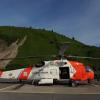
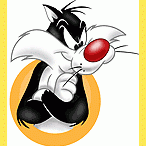
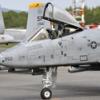
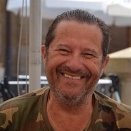

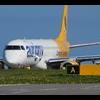


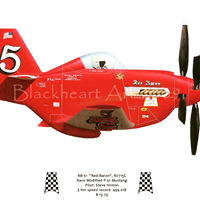
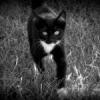
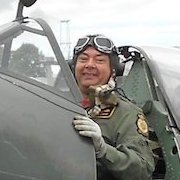


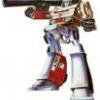



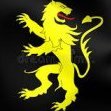


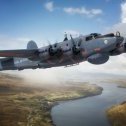



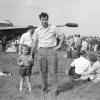
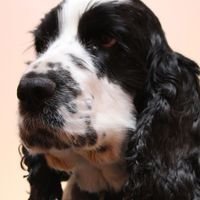
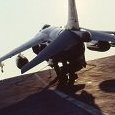


.thumb.jpg.d3635a7ef6507d35f372dd09671fe96f.jpg)
